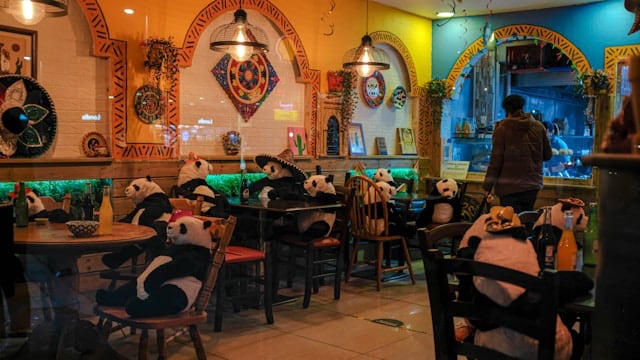Indigestible restaurant concepts
consumer food-service enshittification 2024-08-13 #product

‘Do you know our concept?’ asked the receptionist, as we entered the restaurant. The first time this happened, I didn’t understand the question, because I’d eaten at a restaurant before. Now I know better, and respond, ‘no, thank you.’ And then we leave.
I enjoy novelty and variety as much as anyone. I have also learned that the new restaurant’s ‘concept’ invariably means a worse customer experience.
Less customer service
Concept restaurants reduce the number of staff required to serve customers. From their side of the table, these seem like reasonable ways to reduce front-of-house staff costs:
- customers order on their phones, instead of someone taking their order
- customers collect their own food, instead of someone serving it
- customers clear their own tables.
For customers, these changes approach a fast-food experience, but with restaurant prices. In fact, fast food chains do better at delivering a consistent experience that meets expectations. They deliver better quality than concept restaurants, which rely on taking advantage of people’s expectations.
Worse service
Concept restaurants present ordering on your phone as more convenient than waiting for someone to bring you a menu, perhaps targeting people who have never experienced good service. Ironically, given so many restaurants’ progressively worse service, avoiding contact with a person can feel like a positive innovation.
Attempts to pass off less service as more convenience fool no-one, but software-driven companies like Uber make good user experience plausible. A well-designed mobile phone app may indeed offer a better experience than the average waiter. Unfortunately, restaurants operate on margins too small to fund good software user experience design. Uber probably spends more on developing its consumer mobility app each year than most restaurants’ entire turnover.
Service enshittification
Cory Doctorow invented the term ‘enshittification’ to describe how and why online services deliver progressively worse customer experiences, and then die. Online service enshittification describes products and services that served their customers well, but only at first. Concept restaurants do something similar.
A concept restaurant starts with a worse version of eating out, replacing a failed restaurant that tried cutting costs with worse service instead of less service. But from a restaurant-goer’s perspective, a city’s restaurants collectively started out good, then started getting worse.
Future concepts
Things change. Consumers have become less loyal to online services, switching streaming television service every few months, after watching the decent series. Maybe eating out will change too, with table service going the way of household staff.
Imagine a new middle-ground between fast food and traditional restaurant dining, that proves stable without tricking customers with a bait-and-switch, or the following more random ideas.
- Subscription models - one meal per month for a fixed fee, plus drinks. Subscription price varies by number of diners.
- Universal restaurant app - an ordering app with a consistent user experience across restaurants, and useful personalisation, such as menu filtering based on preferences and allergies.
- Home catering app - extending the gig economy to chefs, by making it easier to book a decent meal that someone else prepares at your home, where you can choose your own concept.
Most versions of these kinds of ideas would work out terribly for consumers too, of course. But perhaps you should book a table at your favourite restaurant while you still can.

